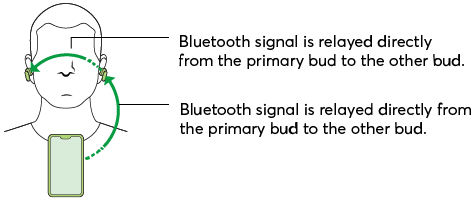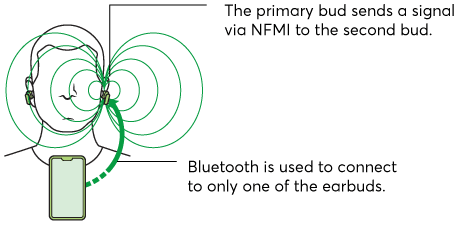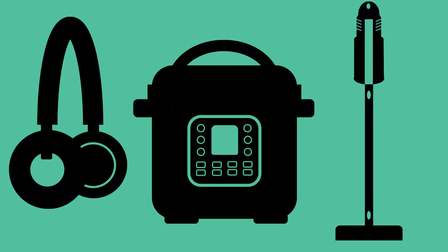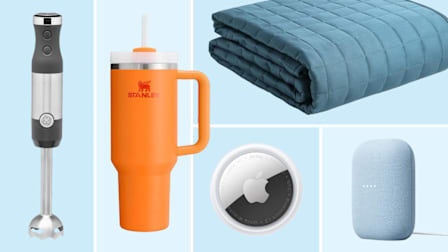It’s a difficult engineering problem, says Swarun Kumar, an assistant professor of electrical and computer engineering at Carnegie Mellon University. “Even if there's a minor delay between the audio and either ear, you're going to have distortions,” he says. The biggest challenge? “There's this big mass called ‘your head’ in between, which absorbs a lot of the signals.”
Manufacturers use one of three basic techniques to make true wireless headphones work. See the diagrams below for an illustration.
In some models, both earpieces get a separate Bluetooth signal from your phone at the same time (diagram 1). Another strategy is to have one earpiece talk to the phone while a second radio connection sends audio from that primary earbud to the second one (diagram 2).
Both of those methods can work, but the Bluetooth signals sometimes run into interference from radio waves put out by other devices. Bluetooth occupies the same band of radio frequencies used by other common products such as WiFi routers and, surprisingly, microwaves. (You might notice your audio cutting out while you heat up your leftovers.)
Adding a second Bluetooth connection increases the chances of interference. That's where the third approach to true wireless headphones comes in. Some models employ a strategy called near field magnetic induction (NFMI)—the phone still sends audio to the primary earbud using a Bluetooth connection, but the primary bud transmits data to the secondary one using a magnetic field (3). NFMI is an older technology that’s been used in hearing aids for years. NFMI isn’t immune to interference, and it calls for additional hardware in an already cramped earbud. But it doesn’t experience the same issues that Bluetooth bud-to-bud connections may have, and NFMI has an easier time passing though the human body.
Overall, true wireless headphones have improved over the years. “They’ve gotten a lot better—with less static and stuttering—since we first tested them in 2016,” says Elias Arias, one of CR’s audio engineers.
Manufacturers don’t often disclose which method their earbuds employ, but our testing can help guide you to an optimal pair. Some of our top picks are the Anker SoundCore Liberty Air, a CR Best Buy at $80 with a Very Good rating for sound; the Samsung Galaxy Buds, which get an Excellent rating and cost around $110; and the Sony WF-1000XM3, a top-rated noise-canceling model for $240.
For more on true wireless models and all the headphones that have gone through our tests, check out CR’s headphones ratings and buying guide.




































